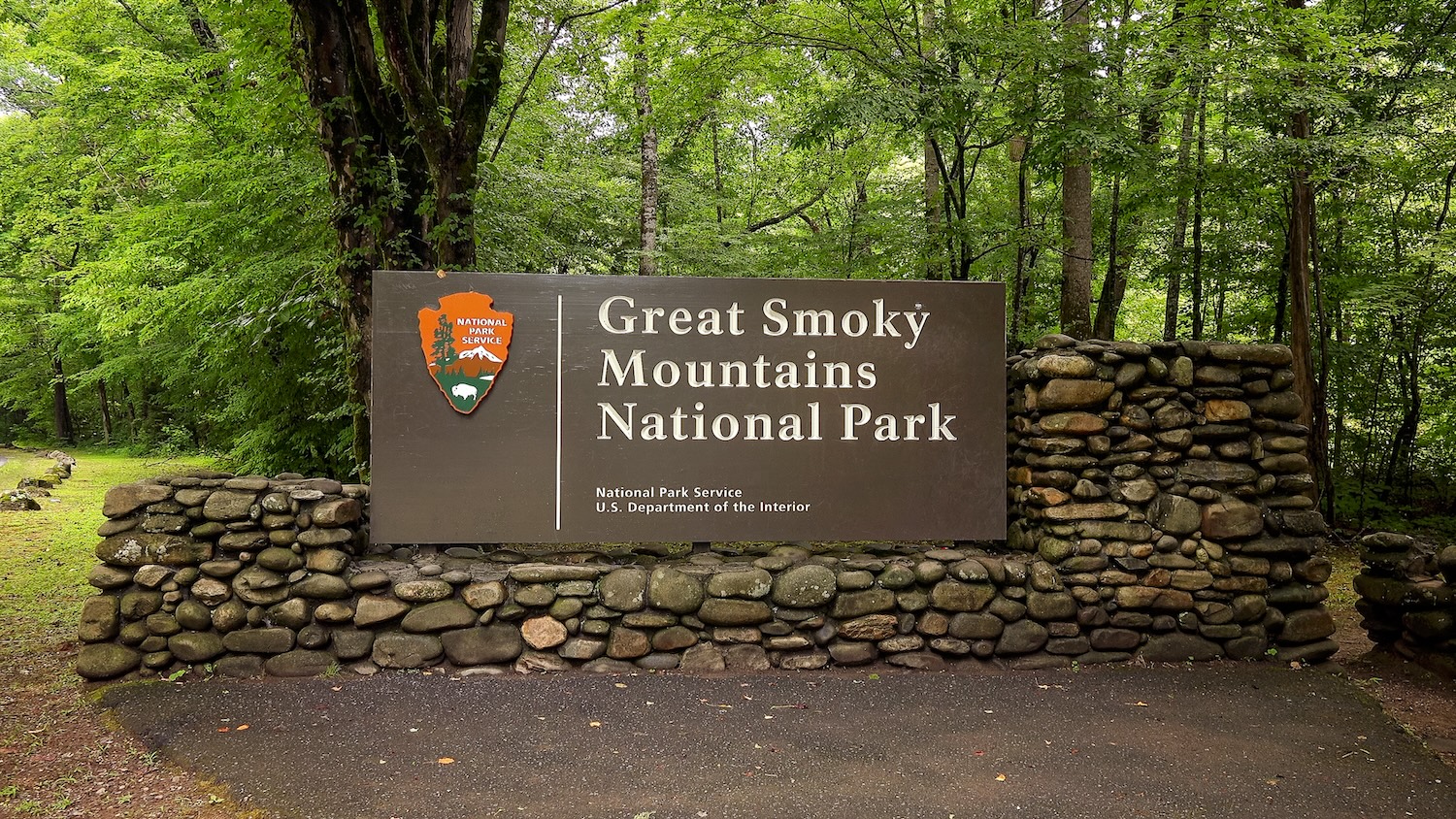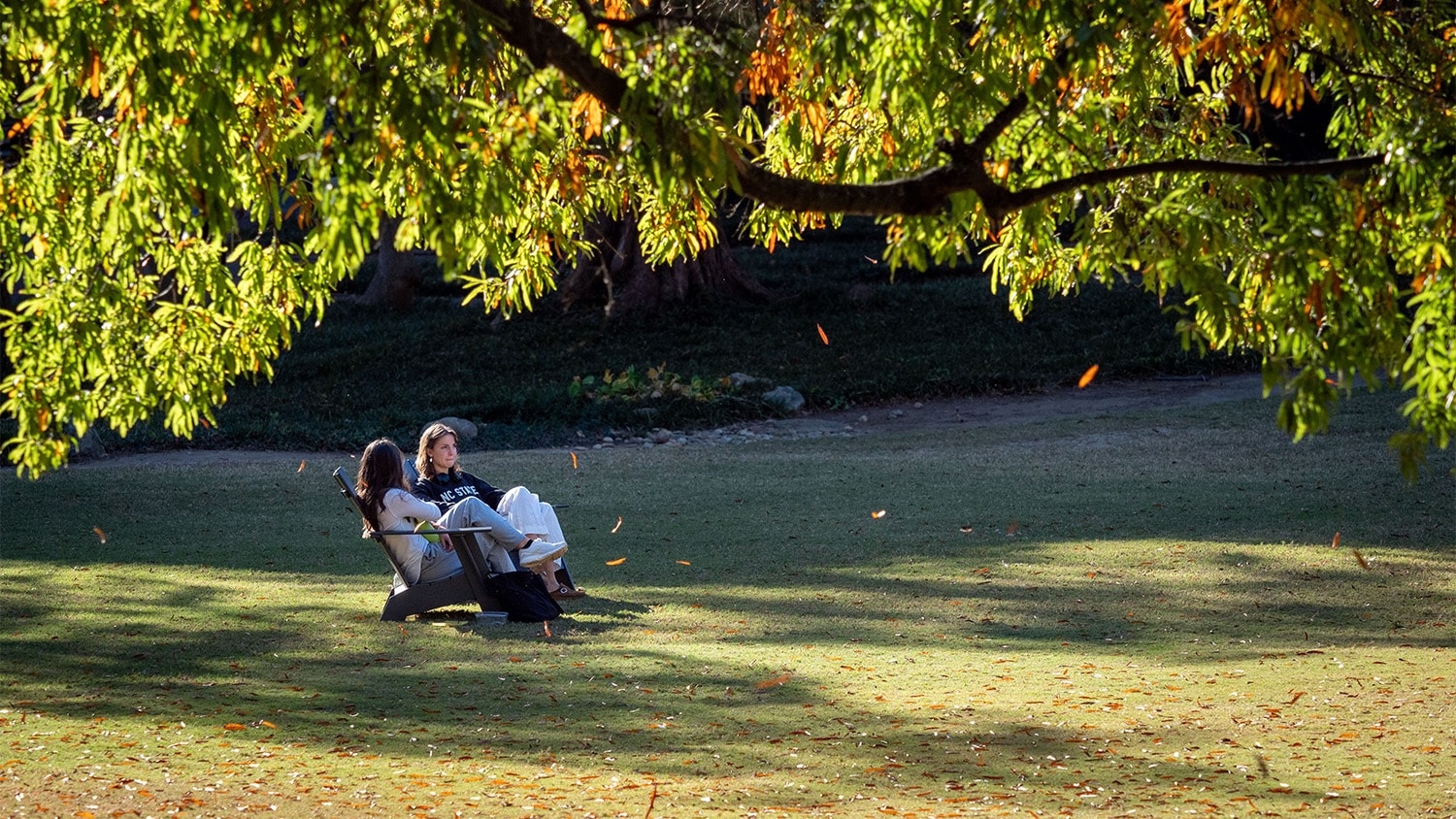How Parks and Green Spaces Can Improve Your Health
NC State associate professors Lincoln Larson and Aaron Hipp discuss the role of parks and green spaces in promoting well-being.

Parks and green spaces provide a variety of health benefits by promoting physical activity, connection to nature and opportunities for community engagement. Nature-based programs can even be prescribed by health care providers as part of alternative, cost-effective treatment plans.
In a paper recently published in the North Carolina Medical Journal, Lincoln Larson and Aaron Hipp, associate professors of parks, recreation and tourism management at NC State, provide an overview of how parks and green spaces can help alleviate contemporary health challenges.
We recently spoke with Larson and Hipp to learn more about the value of these spaces, the programs capitalizing on their benefits, and the equity issues that exist in relation to accessibility. Check it out below.
What defines a green space?
Larson and Hipp: Green spaces can be defined in many ways, from narrow (e.g., forested areas) to broad (e.g., any landscape that includes some natural elements, like a backyard or even street trees).
In general, we like to think about green space as a term that includes both natural ecosystems and key components of the built environment such as public parks, greenways, gardens and forests, as well as private yards and other natural areas.
How do these spaces positively impact physical health?
Larson and Hipp: Because the benefits provided by parks and green spaces are typically free and publicly accessible, they represent a cost-effective alternative and/or supplement to conventional health promotion strategies. These spaces are especially important for physical health. They create environments that support active lifestyles and improve access to exercise opportunities. They also improve cardiovascular health by mitigating risk factors such as high cholesterol levels, hypertension and obesity.
In some cases (think community gardens and hosted farmers’ markets), parks can also foster healthy eating habits. And they provide a variety of ecosystem services by improving air quality, regulating temperature and attenuating impacts of severe weather, all of which impact our health as well. These benefits can therefore be experienced by people that are both physically in parks and green spaces (e.g., running in a park) and communities that live near them (e.g., air quality and temperature regulation).
What mental health benefits do these spaces provide?
Larson and Hipp: Parks and green spaces also provide a number of mental health benefits. People who spend more time in nature enjoy enhanced cognitive functioning and attention and reduced stress. They are also less likely to display anxiety disorders and depression and more likely to report high levels of happiness and well-being.
Connection to nature and green spaces has also been shown to enhance positive youth development. Parks provide benefits to broader communities too, providing spaces where people gather and interact to build social cohesion and foster social capital.
Green land cover also yields economic benefits, and has been linked to lower levels of health care spending and higher levels of financial well-being and security. These benefits have been especially evident during the COVID-19 pandemic, where individuals and communities who had access to parks and green space demonstrated better health outcomes and a heightened ability to cope than those who weren’t able to use or access these areas.
What equity issues exist around realizing these health benefits across all communities?
Larson and Hipp: Despite the immense capacity of parks and green space to improve health outcomes, these resources often remain inequitably distributed across diverse communities. Neighborhoods with a large proportion of low-income or racial/ethnic minority residents typically experience limited access to quality parks and green space, including limited programming within the spaces.
Even when parks are located in these communities, they tend to be of lower quality and are therefore often used less frequently. These disparities have only grown during the COVID-19 pandemic, underscoring the need to ensure the benefits of parks and green space are accessible to and enjoyed by all segments of society.
How can parks and green spaces be leveraged to support community health?
Larson and Hipp: As more people recognize the health promotion potential of parks, a number of programs, tools and initiatives have been designed to leverage these opportunities. Examples of efforts to accentuate these connections include the National Park Service’s “Healthy Parks Healthy People” initiative, the “Leave No Child Inside” movement, and the rise of nature prescription (or Park Rx) programs designed to formalize the health benefits of outdoor spaces through a written prescription from a health care provider.
Novel partnerships are also playing an increasingly important role. In North Carolina, for instance, “Let’s Move Libraries” is a UNC-Greensboro resource for linking public libraries to outdoor-based active living opportunities, and 4-H Youth Development programs run through cooperative extensions offices in each county help youth connect with nature. Play Streets and Open Streets initiatives that increase access to safe outdoor recreation opportunities highlight another creative trend toward outdoor and nature-based health promotion during the pandemic.
Although challenges persist, the health-related benefits generated by parks and green space may be more conspicuous now, during the COVID-19 pandemic, than ever before. At this critical juncture, we need to embrace the value of nature-based interventions at both the individual (e.g., more time outdoors and Park Rx prescriptions for patients) and community level (e.g., policies and programs that facilitate equitable connections to parks and green space). Although more research is needed, the current evidence is clear: elevating the role of green space access and quality in planning, policy and decision-making across diverse contexts could ultimately lead to a healthier and happier population.


